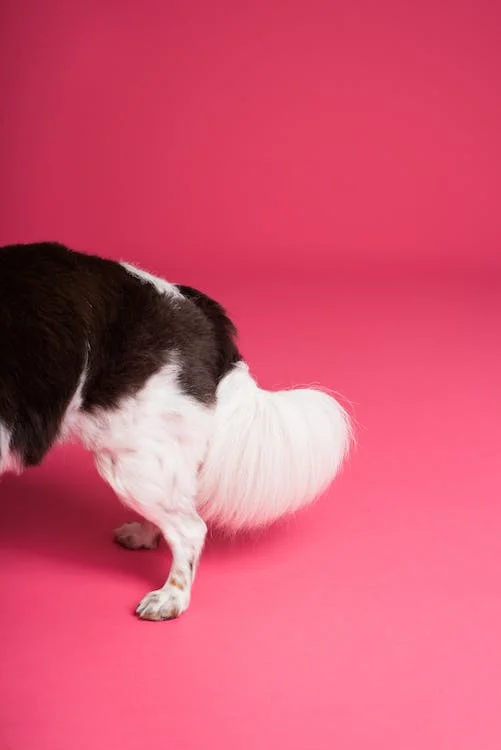Few postures alarm dog owners more than their normally confident canine suddenly tucking tail, lowering their head and slinking away from some perceived threat. Where a puffed confident tail signals power and intention, that same furry rudder recoiled under their belly communicates volumes about dogs experiencing uncertainty or diffusing tensions in their midst. What exactly does the quintessential “tail between legs” expression convey beyond obvious discomfort?
Fear and Anxiety
The most common trigger for tucked tails involves fear, anxiety or incomplete socialization making unfamiliar situations like passing vehicles, strange dogs, shouting adults or exuberant children overwhelm limited coping skills. It essentially telegraphs an intent avoiding confrontation saying “please ignore and avoid me”. The posture aims to diminish their presence defensively.
Appeasing Dominant Dogs
Particularly around assertive dogs defending home turf or resources, meeker pups further convey understanding of their lower social rank by crouching low, ears back, presenting limp paws, avoiding eye contact and tucking their tail as an appeasement ritual. While not enjoying interactions, they aim to prevent actual conflict through pacifying body language.

Pain or Injury
Dogs also reflexively tuck tails attempting to protect already painful areas on their backsides and rectums if those sites get handled or brush past stimuli that aggravates discomfort. Anything hurting basically gets tucked away. Additionally, odd as it seems, severe ear infections actually make dogs tuck tails and shake their heads in referred pain signals as if trying to ease inner irritation.
Helping Nervous Dogs
While tail tucked episodes intend diffusing perceived threats, the underlying trigger often involves fearfulness from poor socialization warranting counterconditioning exercises rebuilding confidence. With patience and rewards, sensitive dogs learn to trust new stimuli as safe rather than defaulting to self-preservation body language in benign situations. Proper socialization prevents reactive fearfulness taking root in early puppyhood especially. Never flood scared dogs past thresholds overwhelming them – gently nudge comfort levels forward instead through positive exposures. In time, previously tucked tails give way to loose happy tail wags again.
So next time your dog greets someone with a tucked tail rather than bouncing exuberance, recognize their body language communicates volumes about their inner world. Meeting them where they’re at now builds trust and confidence at their pace.
Frequently Asked Questions
Why does my dog still tuck his tail when scared after confidence building training?
Learning to regulate fear responses requires immense patience and consistency. The deeply ingrained habit continues affirming their safety needs got respected. Simply stay calm and try guiding dogs away from triggers they remain uncomfortable near using happy distractions.
Could my dog just have a naturally shy temperament?
Absolutely. Many sensitive breeds like sighthounds naturally tend towards reserved, serious dispositions and increased situational wariness. Work gently within their inherent personality through positive exposures rather than trying forcing dogs past their sensibility limits.
How else can I tell if my dog feels frightened?
Whale eye, tense mouth closes, yawning, shaking off, displacement lip licking, hiding attempts or trying to flee all demonstrate anxiety along with tucked tails. Note the whole body language in context with environments.
While instinct shouts caution seeing tucked tails, recognize it aims preventing conflicts, not stoking them. Help fearful dogs positively move at their pace rather than flooding into traumatic experiences eroding foundational trust during development. Patience and compassion pave the fastest path to confidence.



